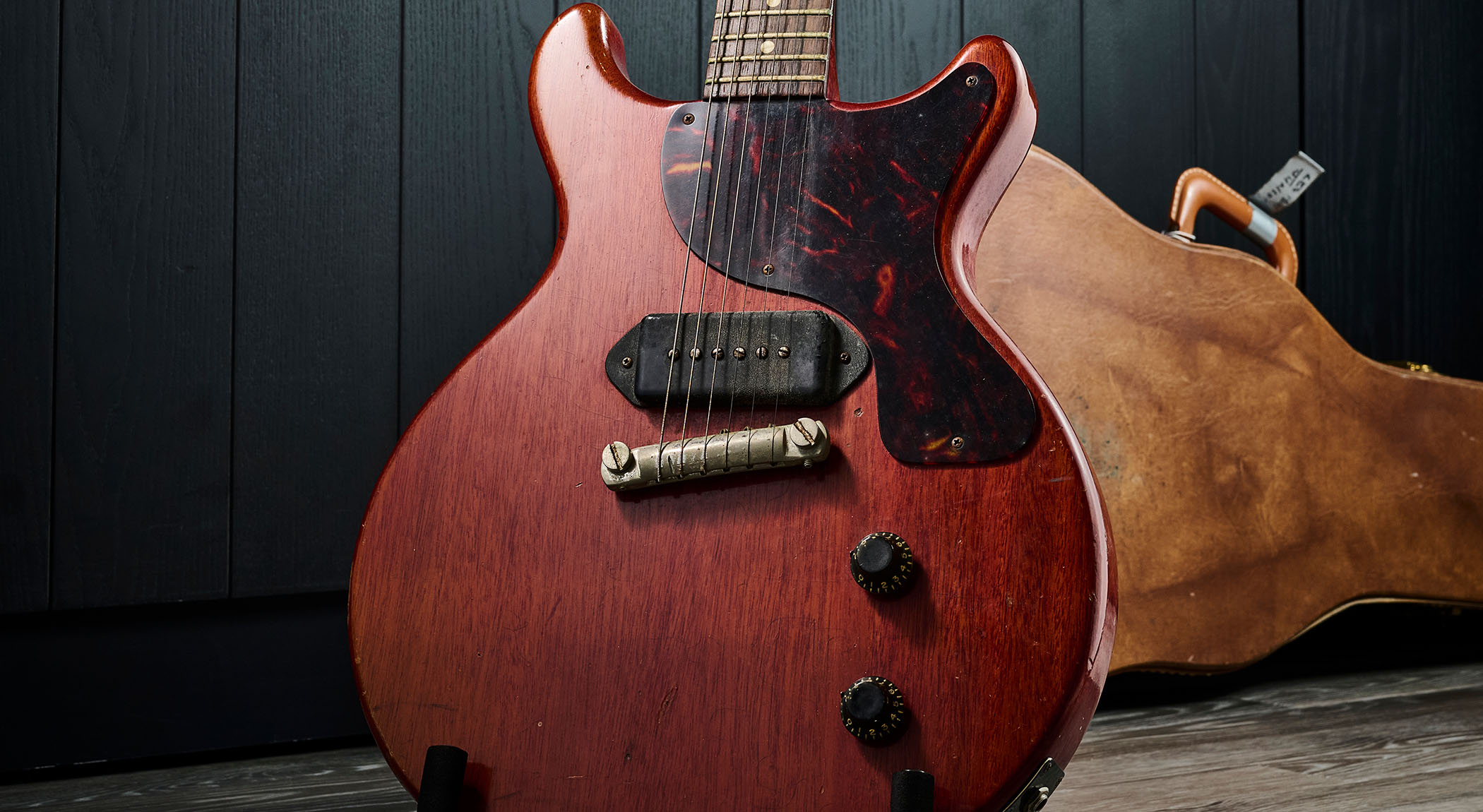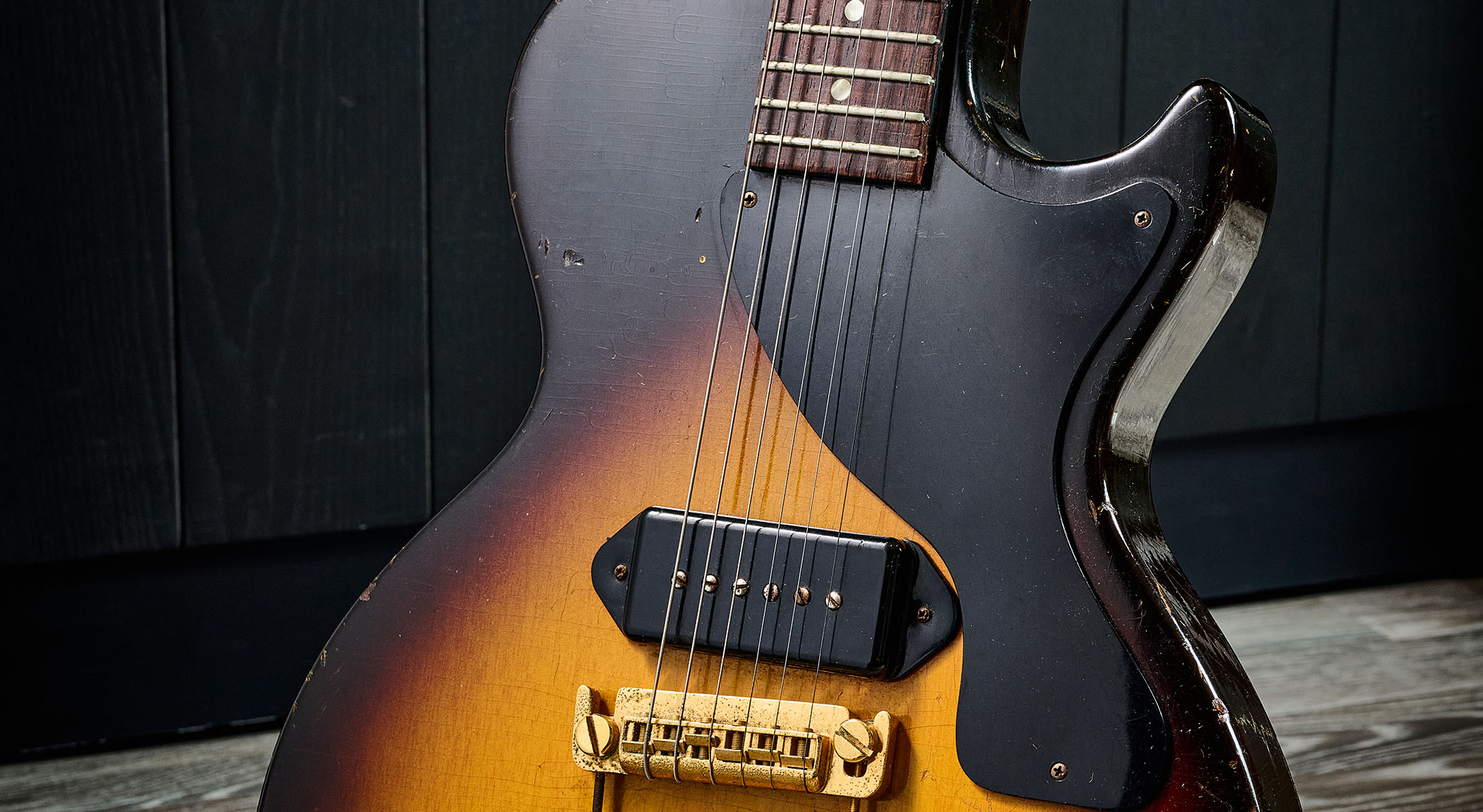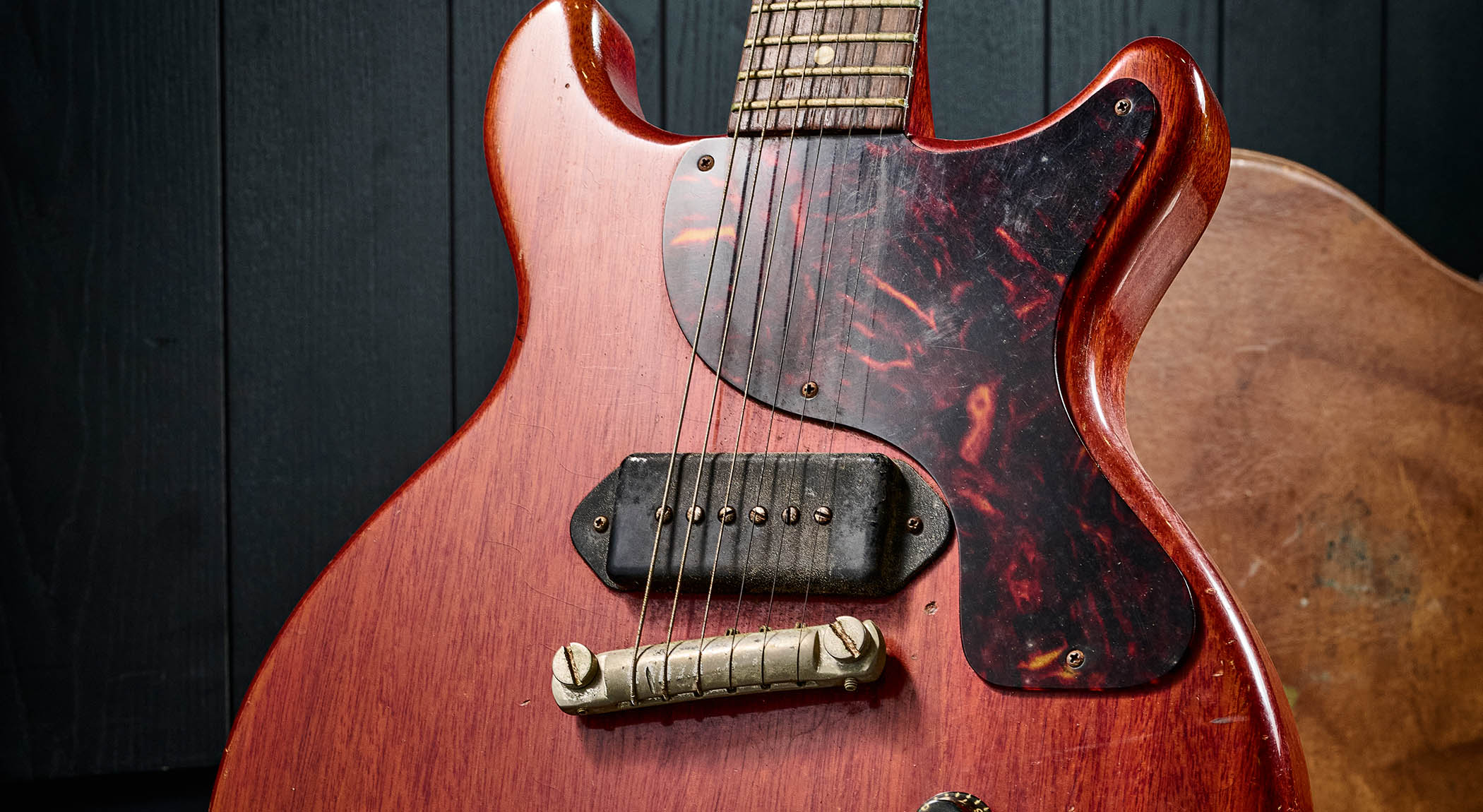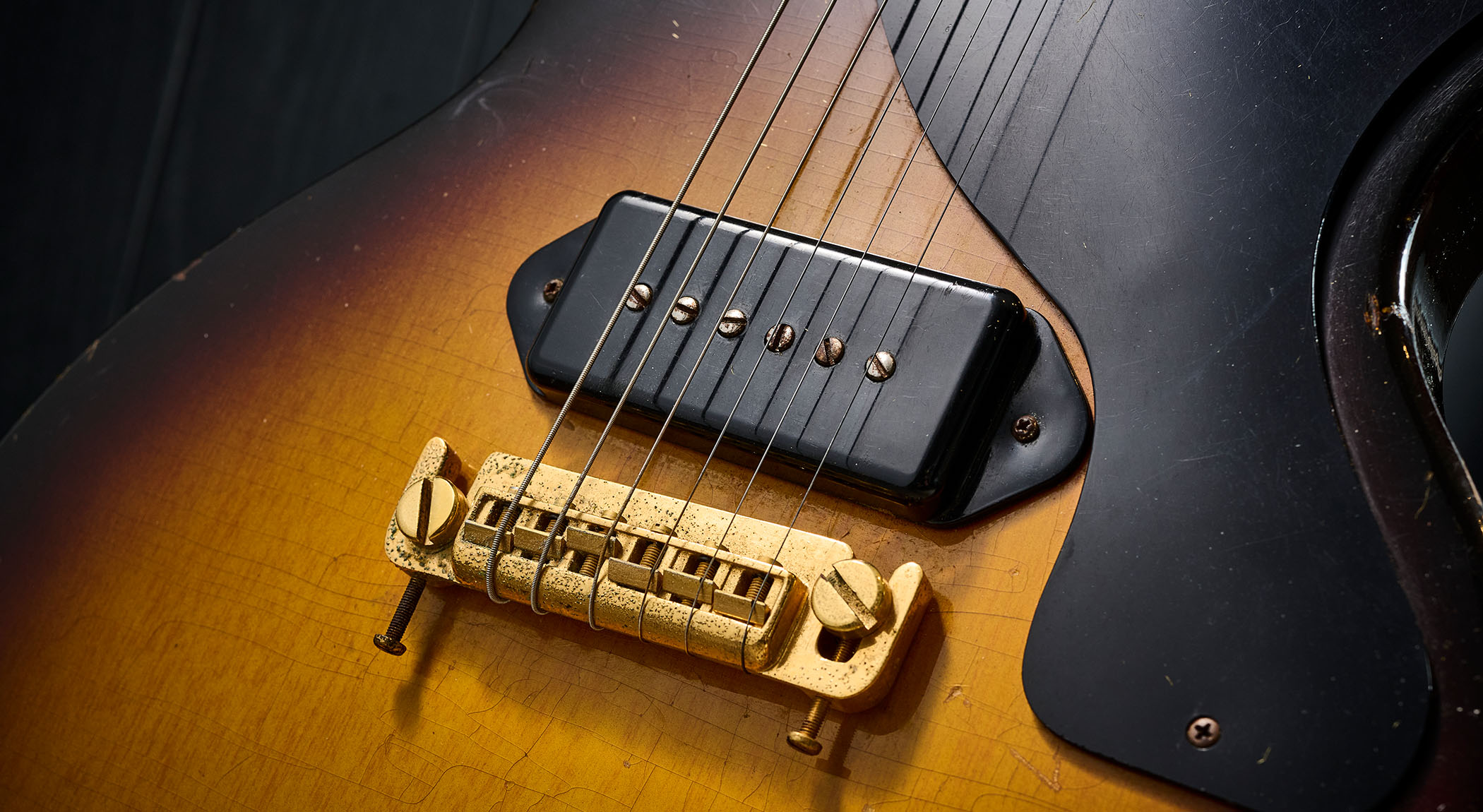“There is a difference in the tone compared with just the simple wrapover bridge, which resonates more in your body”: Why Rory Gallagher’s “Kid Gloves and Walkin’ Wounded” Gibson Les Paul Juniors were two of his best-sounding guitars
They may be among Rory Gallagher’s lesser-known electrics, but these Les Paul Juniors are unquestionably among the finest-sounding he owned

When Irish blues-rock icon Rory Gallagher’s guitar collection went under the hammer at Bonhams of London on 17 October, all eyes were on the fate of his celebrated ’61 Strat – which sold for £889,400 including premium and, happily, is to return to Ireland to be exhibited at the National Museum of Ireland after being bought by Live Nation Gaiety Ltd.
However, while the spotlight fell squarely on the Strat there were other guitars Rory used to blistering effect that deserve more attention. In the days before the auction, Guitarist was lucky enough to play two of the best: Rory’s two Gibson Les Paul Juniors – built in 1958 and 1959 respectively but separated by different body styles and, in the case of the single-cut Junior, a series of tour-focused mods.
Dynamic Duo


The 1959 single-cut is notable for having what appears to be a gold Leo Quan Badass bridge (or a variation on that theme).
Steve Clarke, who prepared the guitar for auction at Bonhams, had this to say of it: “Those particular bridges, mid-’70s or something, were a nice replacement. They tilted forward a little bit, but they gave you the intonation that Junior-type guitars needed more – especially with the gauge of strings that were coming in.
“What I noticed with the Badass bridge is that when you thread a string through the front of the bridge and it comes out the back, it goes over the back lip of the Badass bridge before it makes contact with the saddles and, because of that, it’s almost like a tune-o-matic bridge and tailpiece all combined.
“There is a difference in the tone compared with just the simple wrapover, which resonates more in your body; I could actually noticeably feel that difference between it and the 1959 double-cut. They’re both completely different. They sound and behave differently because of these slight differences. And, of course, the double-cut will sound different for starters because it’s [made with] less wood.”

While preparing the Juniors for sale, Steve was able to take precise measurements of their relative weights, reporting that the 1958 single-cut weighed 3.5kg (7.76lb), while the 1958 double-cut weighed in, as anticipated, a half-kilo lighter at a very comfortable 3kg (6.74lb).
Get The Pick Newsletter
All the latest guitar news, interviews, lessons, reviews, deals and more, direct to your inbox!
Steve adds: “Both the ’58 and ’59 have the original pots and wiring. The Sprague bumble bee caps are the paper-in-oil type with the small tube at one end.”
When Guitarist gave both to Barrie Cadogan – whose stellar playing has lit a fire under the music of Little Barrie, The The, Primal Scream and others over the years – to try out, we observed that the double-cut had a lovely woody expressive voice whereas the single-cut had terrific punch and a soul-searing voice that worked perfectly for slide. The latter should be unsurprising given Rory’s virtuosic touch with slide guitar.

Final cut
Rory’s nephew Daniel Gallagher explains that one of Rory’s Juniors was used on the superb tracks Kid Gloves and Walkin’ Wounded from Rory’s final album, Fresh Evidence, though, alas, no record remains of which of the two Juniors made the cut.
Given both their historic connection to Rory and their intrinsic tonefulness as instruments, it’s unsurprising that these classic late-50s Juniors fetched final prices of £21,760 for the ’58 single-cut and £19,200 for the ’59 double-cut.
Guitarist would like to thank the Gallagher family and Bonhams of London for their generous help in producing this feature.
Jamie Dickson is Editor-in-Chief of Guitarist magazine, Britain's best-selling and longest-running monthly for guitar players. He started his career at the Daily Telegraph in London, where his first assignment was interviewing blue-eyed soul legend Robert Palmer, going on to become a full-time author on music, writing for benchmark references such as 1001 Albums You Must Hear Before You Die and Dorling Kindersley's How To Play Guitar Step By Step. He joined Guitarist in 2011 and since then it has been his privilege to interview everyone from B.B. King to St. Vincent for Guitarist's readers, while sharing insights into scores of historic guitars, from Rory Gallagher's '61 Strat to the first Martin D-28 ever made.
“I heard the Money solo and thought, ‘This is amazing!’ So I sent David a telegram saying, ‘Remember me? I'm in a band now called Roxy Music’”: Phil Manzanera on his friendship with David Gilmour, and the key to the Pink Floyd man's unmistakable tone
“It’s really quite genius, but also hard to learn – it sounds insane, but sometimes the easiest songs still get me nervous”: Kiki Wong reveals the Smashing Pumpkins song she had the most trouble with











